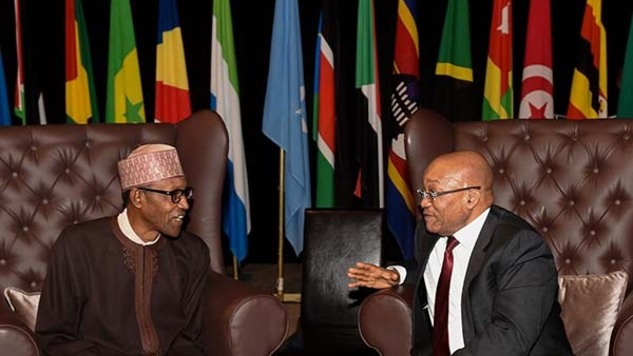Despite WTI Oil commencing the new trading week under pressure and slipping below $33 at $32.30, the commodity managed to regain its momentum and consolidate above $33 as trading concluded for the first day of the new week. At the current time of writing, WTI Oil is teasing a move towards $35 and we see this zone as a huge psychological level for the commodity. If WTI manages to close trading above $35, this opens the gates for further moves higher on the charts and this would be a welcome boost to exporters of the commodity.
Traders should however note that we have been pointing out that $35 is a huge psychological level for WTI Oil for over a month and if we don’t manage to close trading above this level, there could also still be a significant move lower to the downside once again. This is exactly what happened in late January, therefore traders basically need to keep a very close eye on $35 because it is clearly a pivot level for longer-term moves in WTI Oil in my opinion.
Regardless of any ongoing headlines around depressed prices or the possibility of action from some producers to cut production, the fundamentals currently remain heavily stacked against a comeback for the oil markets and this will repeatedly encourage sellers to enter possible positions. Sell-on rally opportunities will most likely be targeted from traders if WTI Oil can’t close trading above $35.
There were headlines over the weekend regarding Nigerian President Muhammadu Buhari being quoted as saying in Doha that the current market situation is “unsustainable and totally unacceptable”, and while we all know that oil producing nations are bound to be feeling the consequences of prolonged weakness in the price of oil, this doesn’t quite yet change what is still a bleak fundamental outlook for oil prices.
Advertisement
It was also noted during the visit to Qatar from the Nigerian President that there was another hint that any moves to cut production levels would have to be collaborated between both OPEC and Non-OPEC members, which seems to be the new tactic from OPEC. The Saudi Arabian Oil Minister first hinted at the need for collaboration between both OPEC and Non-OPEC members in December, however it is going to be difficult enough to get OPEC members to agree between themselves on production levels before even entertaining the idea of a worldwide agreement.
British Pound and Euro continue to be sold
Investors continued to receive encouragement to price in further declines into the Euro currency at the beginning of the week following economic data showing that the European economy slipped back into deflation territory in February. The return to deflation territory for the European economy has encouraged sellers to continue pricing in declines into the Euro currency, with the economic data release yesterday encouraging expectations that the European Central Bank (ECB) will be under further pressure to introduce new stimulus measures once again in March.
Advertisement
Whether the ECB will actually unleash further QE is going to be widely discussed over the coming weeks, but investors are currently pricing in at least another interest rate cut from the ECB or lowering its deposit rate even further from where it already stands at minus 0.3%. Technically, the Euro remains very weak against the Dollar and it appears that an even wider divergence of monetary policy between the ECB and US Federal Reserve will continue to encourage sellers in the EURUSD. The EURUSD finally closed below 1.10 at the end of last week, and this increases the possibility that the pair will now fall towards 1.07.
The GBPUSD has continued to fall to further milestone lows, with the major currency pair finding its feet at its lowest level since March 2009 at 1.3835 to begin the trading week. The catalyst that has inspired further selling in the British Pound has been a preliminary poll showing that the vote on EU membership in late June might be very close. Although the poll that was released over the weekend was only preliminary and didn’t include a wide enough sample to represent a population of over 50 million people, there is no disputing that the UK economy is going to have uncertainty hanging over its head for months and this is more than enough to encourage further weakness in the British currency.
A “Brexit” could have horrific consequences on the UK economy and I personally think that the confirmation that a referendum will take place in late June will be enough encouragement for traders to continue pricing in weakness in the GBPUSD towards 1.30. The GBPUSD looks technically extremely weak and the psychological close below 1.40 late last week means that longer-term sellers have probably found at opportunity at their feet to price in further declines into this major currency pair.
Selling in China continues
Advertisement
The Shanghai Composite fell sharply lower once again on Monday, following a huge decline above 6% late last week. Investor sentiment towards the China markets is still very fragile, and investor confidence is still being weighed down by numerous different factors when it comes to the China markets. Uncertainty is still intense regarding where GDP growth will be announced in 2016 and there are also concerns around the numerous stimulus measures put in place by the People’s Bank of China (PBoC) over the previous 18 months or so not yet having a positive impact on economic data.
Other concerns that are making investors uncertain when it comes to their China portfolio include a lack of confidence regarding the future direction of the RMB with many investors expecting the currency to continue its weakness in the future, and also anxieties regarding capital outflows.
Gold rebounds despite robust US GDP
Despite Gold encountering losses following the US GDP revision unexpectedly climbing higher at the conclusion of last week, the Yellow metal attempted to recover losses during the first day of trading for the new week. The metal managed to climb back above $1220 on Monday, with Gold finding a high just above $1235.
Advertisement
There are some concerns that with the US GDP forecast for Q4 last year being revised higher, economic momentum in the United States could slip further in the opening half of 2016. This could limit the potential for further increases of the US interest rate from the Federal Reserve, which is encouraging for investors that are interested in purchasing Gold.
I personally think that traders are continuing to monitor the $1200 area of Gold as a pivot level and bearing in mind that Gold failed to close below $1200 last week, this could also be behind the rebound in the metal.
Advertisement
Follow Jameel on Twitter @Jameel_FXTM
For more information please visit: ForexTime
Advertisement







